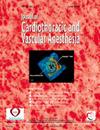新生儿和婴儿逆行选择性下体灌注主动脉弓重建围手术期急性肾功能衰竭的发生率。
IF 2.3
4区 医学
Q2 ANESTHESIOLOGY
Journal of cardiothoracic and vascular anesthesia
Pub Date : 2025-03-21
DOI:10.1053/j.jvca.2025.03.028
引用次数: 0
摘要
目的:探讨经股动脉导管逆行选择性下体灌注(SLP)对小儿主动脉弓重建术中尿量及急性肾损伤(AKI)发生率的影响。次要目的是观察股浅动脉插管是否与灌注区并发症有关。设计:为期8年(2015年1月至2023年12月)的回顾性研究。环境:三级保健医院儿科心脏中心。参与者:接受选择性主动脉弓重建和体外循环的新生儿和婴儿(N = 104),其中45例接受逆行SLP。干预措施:在手术下行主动脉夹持期间,通过超声引导、体重适应股动脉导管逆行灌注SLP,与具有相同手术、灌注和麻醉管理但没有SLP的对照组相比。测量和主要结果:使用KDIGO标准在多个预定时间点分析围手术期AKI发生率,以及尿量。SLP组即刻和术后6小时AKI发生率显著降低(p = 0.001)。SLP组术后至第3天尿量增高(p≤0.045)。出院前均无血管并发症。结论:逆行SLP与AKI发生率降低和术后尿量增加有关,无血管并发症。需要进一步研究逆行SLP对肾功能的长期影响。本文章由计算机程序翻译,如有差异,请以英文原文为准。
Perioperative Incidence of Acute Renal Failure in Aortic Arch Reconstruction Using Retrograde Selective Lower Body Perfusion in Neonates and Infants
Objective
Examination of the impact of retrograde selective lower body perfusion (SLP) via a femoral arterial catheter on urine output and the incidence of acute kidney injury (AKI) during pediatric aortic arch reconstructions. The secondary objective was if the cannulation of the superficial femoral artery was associated with complications in the perfusion area.
Design
A retrospective study over an 8-year period (January 2015 to December 2023).
Setting
Pediatric heart center of a tertiary care hospital.
Participants
Neonates and infants (N = 104) undergoing elective aortic arch reconstruction with cardiopulmonary bypass, of whom 45 received retrograde SLP.
Interventions
Retrograde SLP via ultrasound-guided, weight-adapted femoral artery catheters for retrograde perfusion during clamping of the descending aorta under surgery, compared to a control group with identical surgical, perfusion, and anesthesiologic management but without SLP.
Measurements and Main Results
Perioperative AKI incidence was analyzed using KDIGO criteria at multiple predetermined time points, along with urinary output. The SLP group showed a significantly lower AKI incidence immediately and 6 hours postsurgery (p = 0.001). Higher urine output postoperatively until day 3 (p ≤ 0.045) in the SLP group. No vascular complications were observed until hospital discharge.
Conclusions
Retrograde SLP is associated with a reduced AKI incidence and increased postoperative urine output, without vascular complications. Further studies are needed to investigate the long-term effects of retrograde SLP on renal function.
求助全文
通过发布文献求助,成功后即可免费获取论文全文。
去求助
来源期刊
CiteScore
4.80
自引率
17.90%
发文量
606
审稿时长
37 days
期刊介绍:
The Journal of Cardiothoracic and Vascular Anesthesia is primarily aimed at anesthesiologists who deal with patients undergoing cardiac, thoracic or vascular surgical procedures. JCVA features a multidisciplinary approach, with contributions from cardiac, vascular and thoracic surgeons, cardiologists, and other related specialists. Emphasis is placed on rapid publication of clinically relevant material.

 求助内容:
求助内容: 应助结果提醒方式:
应助结果提醒方式:


